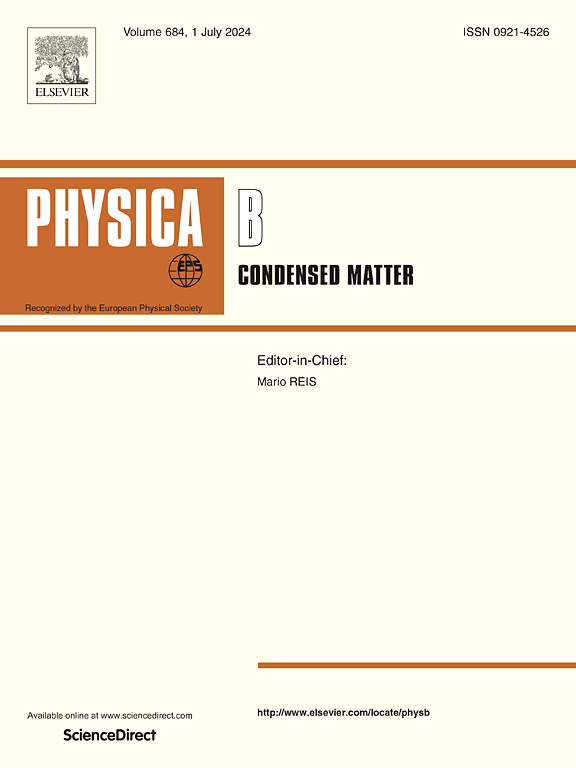Structural insights and electrochemical behavior of Co21.2O32 and Cu2CoO3for high-performance supercapacitor applications
IF 2.8
3区 物理与天体物理
Q2 PHYSICS, CONDENSED MATTER
引用次数: 0
Abstract
This study delves the structural, morphological, and electrochemical properties of Co21.2O32and Cu2CoO3 compounds for supercapacitor applications. X-ray diffraction (XRD) confirms the pure crystalline structures of Co21.2O32 (cubic, Fd-3m) and Cu2CoO3 (orthorhombic, Pmmn), with crystallite sizes of 35.925 nm and 29.518 nm, respectively. Field emission scanning electron microscopy (FESEM) reveals granular morphologies with average grain sizes of 559.67 nm for Co21.2O32and 676.98 nm for Cu2CoO3. Energy-dispersive X-ray spectroscopy (EDX) and X-ray photoelectron spectroscopy (XPS) confirm the elemental compositions and valence states, including the presence of oxygen vacancies that enhance electron hopping. Electrochemical analysis, including cyclic voltammetry (CV), galvanostatic charge-discharge (GCD), and electrochemical impedance spectroscopy (EIS), shows that Cu2CoO3 exhibits superior performance, with higher specific capacitance (1186 F g−1 at 1 A/g) and excellent cycling stability (85 % retention after 10,000 cycles). The addition of copper improves conductivity, charge storage, and long-term durability, making Cu2CoO3 a promising candidate for energy storage applications.
求助全文
约1分钟内获得全文
求助全文
来源期刊

Physica B-condensed Matter
物理-物理:凝聚态物理
CiteScore
4.90
自引率
7.10%
发文量
703
审稿时长
44 days
期刊介绍:
Physica B: Condensed Matter comprises all condensed matter and material physics that involve theoretical, computational and experimental work.
Papers should contain further developments and a proper discussion on the physics of experimental or theoretical results in one of the following areas:
-Magnetism
-Materials physics
-Nanostructures and nanomaterials
-Optics and optical materials
-Quantum materials
-Semiconductors
-Strongly correlated systems
-Superconductivity
-Surfaces and interfaces
 求助内容:
求助内容: 应助结果提醒方式:
应助结果提醒方式:


